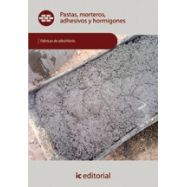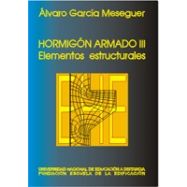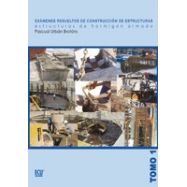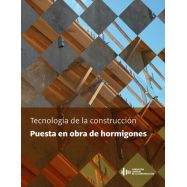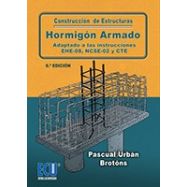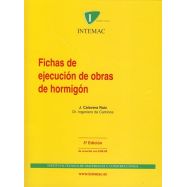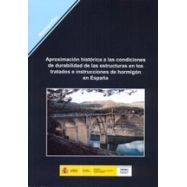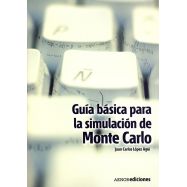Ningún producto
Materias
- BELLISCO EDICIONES. Nuestro Fondo Editorial
- FONDOS EDITORIALES EN DISTRIBUCION
- LIBROS TECNICOS EN INGLES
- ARQUITECTURA - URBANISMO
- AUTOMOCION - MOTORES - VEHICULOS
- AVIONICA - AERONAUTICA
- CALIDAD - EMPRESARIALES - GESTION
- CIENCIAS EXACTAS - MATEMATICAS
- CIENCIAS NATURALES Y APLICADAS
- CIENCIAS DE LA TIERRA - INGENIERIA DEL SUELO
- DICCIONARIOS TECNICOS
- ESTRUCTURAS - CONSTRUCCION
- FORMACION PROFESIONAL
- HIDRAULICA - INGENIERIA SANITARIA - AGUAS
- INGENIERIA CIVIL - OBRAS PUBLICAS
- INGENIERIA MECANICA E INDUSTRIAL
- INSTALACIONES . GENERALES, EN EDIFICACION E INDUSTRIALES
- MATERIALES
- MEDIO AMBIENTE
- NORMATIVA
- OPOSICIONES
- PREVENCION DE RIESGOS LABORALES
- PROGRAMAS INFORMATICOS DE CALCULO
- TECNOLOGIA DE LOS ALIMENTOS: Industrias: Conservación, envasado y cadenas alimentarias
- TELECOMUNICACIONES - INFORMATICA - TECNOLOGIA DE LA INFORMACION
- OUTLET DE BELLISCO: Descuentos de hasta el 80%
- RELIGION, TEOLOGIA, MORAL Y ESPIRITUALIDAD
- VARIOS
- OFERTAS
- PROMOCIONES
- NEWSLETTER
- CATEGORIAS DESTACADAS
- ULTIMAS NOVEDADES BELLISCO
- ARQUITECTURA SOSTENBILE
- URBANISNO
- MATEMATICAS EN GENERAL
- AGRONOMOS-AGRICULTURA-FORESTALES
- ELECTROMAGENTISMO-ELECTRONICA-ELECTRICIDAD
- INGª Y MECÁNICA DEL SUELO. CIMENTACIONES
- TOPOGRAFIA, FOTOGRAMETRÍA, GEODESIA
- EDIFICACION
- ANALISIS DE ESTRUCTURAS, RESISTENCIA DE MATERIALES, ELASTICIDAD, CALCULO MATRICIAL
- OFICIOS VARIOS
- ABASTECIMIENTO Y DISTRIBUCION DE AGUA
- PUENTES
- TUNELES Y OBRAS SUBTERRANEAS
- MAQUINAS Y MECANISMOS
- SOLDADURA
- CLIMATIZACION
- INSTALACIONES DE AGUA
- INSTALACIONES ELECTRICAS CIENCIA E INGENIERIA DE MATERIALES
- ENERGIAS RENOVABLES
- DESARROLLO SOSTENIBLE
- INFORMATICA-SISTEMAS-FORMACION-PROGRAMAS
-
SEAWATER IN CONCRETE MIX
 Ver más grande
Ver más grande Referencia: Código 10927
Febrero de 2024 - Hidenori Hamada.. - Refª 10927
Hidenori Hamada, Nobuaki Otsuki, Takahiro Nishida
Febrero de 2024 Páginas: 144 Edición en tapa blanda
Código 10927 ISBN/EAN: 9781032046693
DESCRIPTION:
In the near future, many parts of the world will suffer from a shortage of freshwater. Effective use of seawater in concrete production could therefore become a crucial technology. Seawater in Concrete Mix provides a detailed overview of the fundamental knowledge of concrete engineering that is essential for the usage of seawater-mixed concrete.
According to the worldwide standard for reinforced concrete (RC), freshwater is typically used in concrete mixing rather than seawater. Yet a potential exists for the extensive use of seawater in concrete, especially with the addition of ground granulated blast-furnace slag, fly ash, or other mineral admixtures. The recent trend toward performance-based design makes this alternative more viable.
The text is ideal for graduate students, researchers, concrete engineers, and all civil engineers who deal with concrete for infrastructure.
Hidenori Hamada is Professor of Kyushu University, Japan.
Nobuaki Otsuki is Professor Emeritus of Tokyo Institute of Technology and was Chairman of the JCI Technical Committee on the use of seawater in concrete.
Takahiro Nishida is Senior Researcher of the Japanese National Institute of Maritime, Port and Aviation Technology.
TABLE OF CONTENT:
1 Introduction
PART I Research and Technology
2 Engineering Properties of Seawater Concrete
(with OPC and BFS/FA)
3 Special Techniques for Seawater Concrete
PART II
Actual Constructions
4 Japanese Experience with Seawater Concrete
5 European Experience with Seawater Concrete
6 Summary and Future Scope
Biography
Hidenori Hamada is Professor of Kyushu University, Japan, since 2009. His has previously worked as a Senior Research Engineer, Head of Materials Division, and a member of Port and Airport Research Institute, Yokosuka, Japan. His research topics include durability of RC and PC structures under marine conditions, life extension technology of severely deteriorated RC and PC structures, and eco-friendly concrete material development such as seawater utilization in concrete production.
Nobuaki Otsuki is Professor Emeritus of Tokyo Institute of Technology, Japan. He has worked as a Senior Research Engineer and Head of Materials Division at Port and Airport Research Institute, Yokosuka, Japan. His research include are durability of RC and PC structures under marine conditions, life extension technology of severely deteriorated RC and PC structures, and eco-friendly concrete material development such as seawater utilization in concrete production
Takahiro Nishida is Senior Researcher of the Japanese National Institute of Maritime, Port and Aviation Technology, and Port and Airport Research Institute, Japan. He has worked for several research institutes, including port and airport, electric power industry, and highway. He has taught construction material at Tokyo Institute of Technology and Kyoto University. His research interests include durability and maintenance of civil engineering structures.
Descripción
En un futuro próximo, muchas partes del mundo sufrirán escasez de agua dulce. Por tanto, el uso eficaz del agua de mar en la producción de hormigón podría convertirse en una tecnología crucial. Seawater in Concrete Mix proporciona una descripción detallada de los conocimientos fundamentales de la ingeniería del hormigón que son esenciales para el uso de hormigón mezclado con agua de mar.
Según la norma mundial para el hormigón armado (RC), para mezclar el hormigón se suele utilizar agua dulce en lugar de agua de mar. Sin embargo, existe potencial para el uso extensivo de agua de mar en el concreto, especialmente con la adición de escoria granulada molida de alto horno, cenizas volantes u otras mezclas minerales. La reciente tendencia hacia el diseño basado en el desempeño hace que esta alternativa sea más viable.
El texto es ideal para estudiantes de posgrado, investigadores, ingenieros del hormigón y todos los ingenieros civiles que se ocupan del hormigón para infraestructura.
Hidenori Hamada es profesor de la Universidad de Kyushu, Japón.
Nobuaki Otsuki es profesor emérito del Instituto de Tecnología de Tokio y fue presidente del Comité Técnico de la JCI sobre el uso de agua de mar en el hormigón.
Takahiro Nishida es investigador principal del Instituto Nacional Japonés de Tecnología Marítima, Portuaria y de Aviación.
Tabla de contenido
1. Introducción
PARTE I Investigación y Tecnología
2 Propiedades de ingeniería del hormigón de agua de mar
(con OPC y BFS/FA)
3 técnicas especiales para hormigón de agua de mar
PARTE II
Construcciones reales
4 Experiencia japonesa con hormigón de agua de mar
5 Experiencia europea con hormigón de agua de mar
6 Resumen y alcance futuro
TAMBIEN LE PUEDE INTERESAR
- 21,00 €
- 59,00 €
- 84,00 €
- 28,50 €










